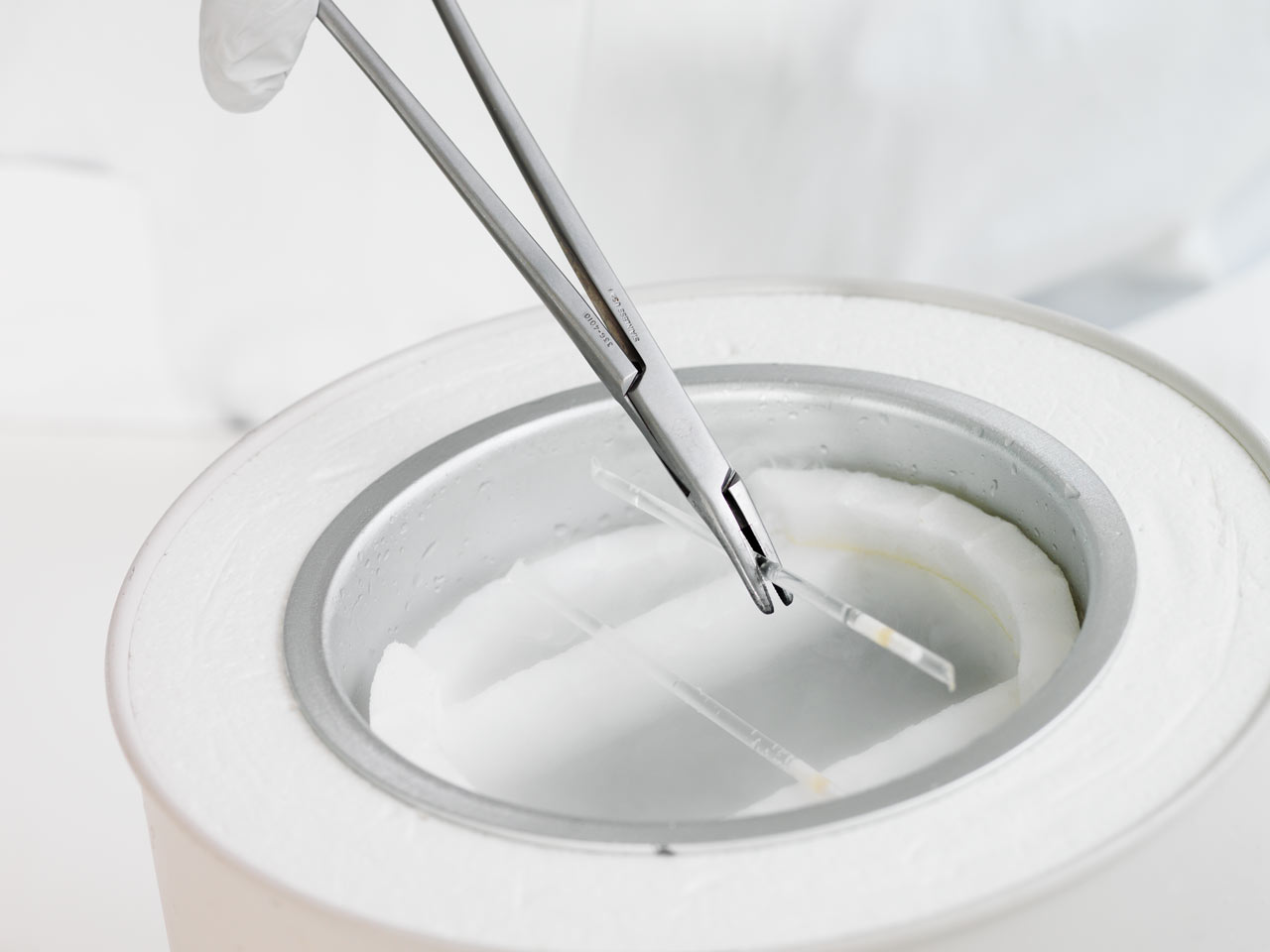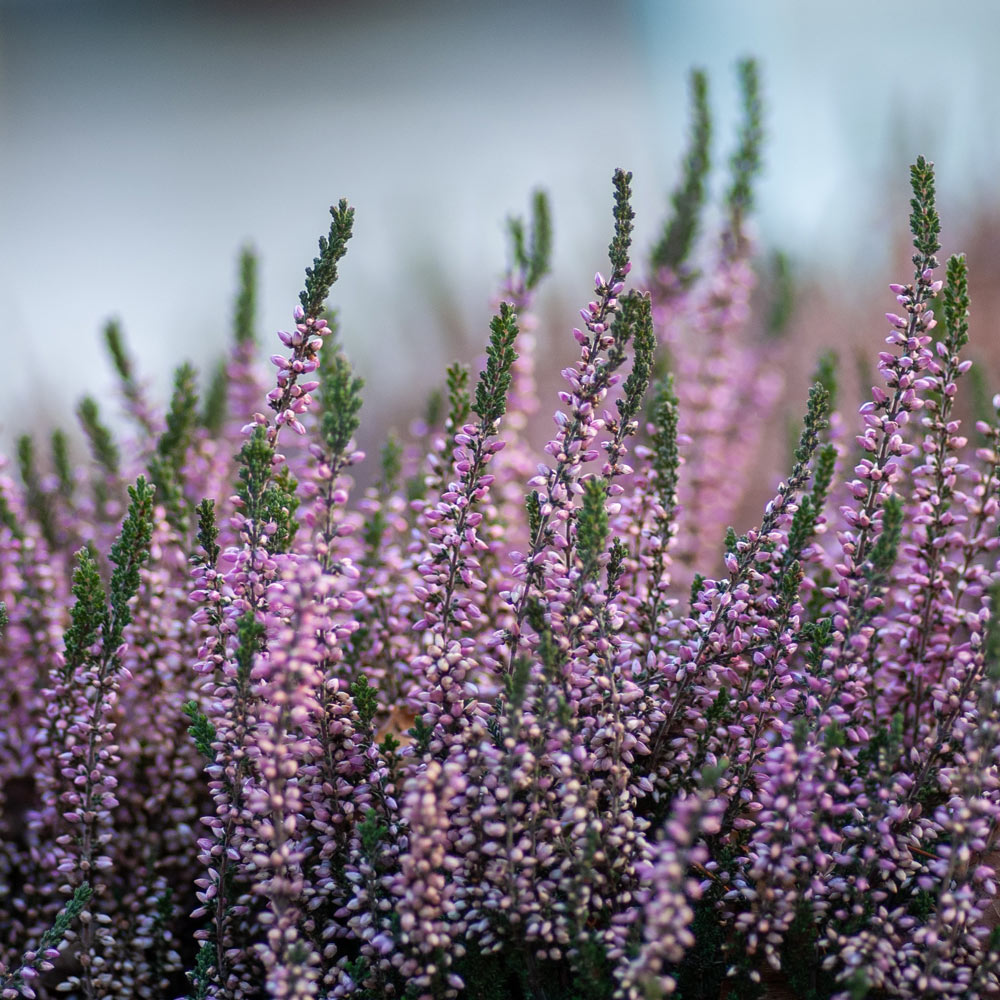So, why Nidacon?
Nidacon understands that the first steps towards successful artificial reproduction are the most important. We do our best to provide the tools and methods to make sure that they are done correctly. Helping our customers help theirs – Right from the start.
Nidacon develops, manufactures, and markets medical devices and solutions for Assisted Reproduction Technologies (ART), including IVF, ICSI, artificial insemination (IUI), and vitrification.
The first steps towards successful artificial reproduction are always the most important. That’s why we at Nidacon do our best to provide our customers with the tools and methods to make sure that they are done correctly. Helping our customers help theirs – Right from the start.
Headquartered in Gothenburg, Sweden, Nidacon is continually striving to improve assisted reproduction outcomes by developing superior media systems for ART clinics and patients as well as the animal breeding industry. Nidacon is:

MAGDA ALIC HOLMES
Vice President
Started working in the ART field 30 years ago. I worked mainly with customer service, marketing, management and various regulatory missions. The last couple of years I have been responsible for the daily operations at Nidacon, and believe in the strength of a close working team, always having a customer oriented focus, a global mindset and constant development.

KRISTINA WRIGHT
Financial Coordinator
Started working at Nidacon 2002. I am today responsible for the financial side of the company but I have touched other parts of the company like handling orders, customer contact and production. I feel that Nidacon gives me room to develop and grow within and outside my expertise which is a positive challenge.

OSCAR RYMO
Marketing Manager
What drives me in my work is a strong belief in the power of relationship-marketing and the value of personal communication, both through face-to-face meetings but also through the possibilities new communication tools offer. I have worked as Marketing Manager at Nidacon now for 20 years, with a broad experience in marketing, both from the Med-Tech field, but also from other industries.

Anders Edvardsson
IT and Administration Coordinator
Joined the Nidacon team 2002 as a Logistics Coordinator and after many years as a Key Account Manager, working closely with our distributors throughout the world, now hold the position as IT and Administration Coordinator.

Martin Magnusson
Global Key Account Manager
I joined Nidacon in 2024, bringing my background in sales and communication.
As a Global Key Account Manager, I believe in building long-term relationships, forming new contacts, and exploring new opportunities, working closely with our customers to understand their needs and provide effective solutions.

Anna Niläng
Veterinary Product Manager
I have been part of the Nidacon team since 2000. With a background in business (Uppsala University) and biomedical analytics (Gothenburg University), I focus on product development and serve as the product manager for our veterinary products.

Emma Holmes
Research and Development Manager
Started working at Nidacon in 2005/2006 although I have been connected with the world of ART for many years prior to that. I have a background in Science and specifically Animal Biology (Univ.of Guelph, Canada). At Nidacon I work in research and development and really thrive on finding new ideas and solutions. I have previously also worked in marketing as a product specialist.

Håkan Nilsson
Production Manager
Production Manager. Has been with Nidacon since 2000.

Sean Graham
Purchasing/Production
Since 2008 I have been working in production and have since become responsible for purchasing as well. To work for a “family” of forward-thinking individuals fits my style perfectly as I bring work experience from several different fields. To know that our daily work helps people fill their lives with the joy of children makes it easy to come to work every day.

Marina Danilova
QA
I’ve been a part of the Nidacon team since the year 2001. My background is as a biologist (Russia, MarGU, University). I’m responsible for the quality assurance testing of all products.

Dennis Johansson
Storage Manager
Has been a part of the Nidacon team since the year 2004. I started as a lab assistant and now I’m working as storage manager. I’m responsible for Nidacons storage and I´m handling your orders and all deliveries.

Madeleine Holmberg
Production

Sofia Liman
Production
I joined Nidacon in 2023. With many years experience from working in pharmacy I feel passionate about working with quality and helping people. It brings me joy being able to continue to make a change as part of the production team. I’m looking forward to keep learning and develop here at Nidacon.

DR. PAUL HOLMES. MSC, PHD, DRMEDSC, ASSOCIATE PROF.
Founder, President

DR. EWA USTYANOWSKA-HOLMES, MD
Co-founder
Quality is
our mission


At Nidacon, our mission is to help improve one of the most important parts of life’s journey – its start. We do this by developing superior products for assisted reproduction applications, doing our best to improve the outcome of Assisted Reproduction with more pregnancies, by developing superior products and systems for clinic and patients. We focus on providing the highest quality care of living cells, both with regard to quality and technical standards. We then make these products globally available to clinics and patients in the human assisted reproduction and animal breeding industries, with the goal of making Nidacon the first choice for both current and future customers.
At Nidacon, both our products and our reputation are built on a foundation of quality. We go to great lengths to ensure maximum quality in everything we do. In production, we achieve this by using only the most carefully selected and evaluated suppliers and seeing to it that our products are of high and consistent quality and meet or exceed all regulatory requirements for the medical device companies we supply. Our devotion to quality doesn’t stop there, however. We are also committed to continually investing in the further development and extension of our product portfolio in order to remain a financially stable and growing company both now and in the future.
Nidacon is certified according to SS-EN ISO 13485. The management system secures continued development of the organisation.
We register our products according to the valid directives and requirements for all different countries. This also ensures our high quality on the market and it shall continue to be our beacon.
The Nidacon Approach to Quality Assurance
In order to ensure that we consistently meet the highest of possible standards, Nidacon practices a strict approach to Quality Assurance (QA). We check every product or process to ensure the following:
- That every product is registered with the applicable agencies and meets the directives and requirements for each country.
- That every production batch is carefully tested at Nidacon, with sterility controls, endotoxin level measurement, biological efficacy tests, and more being carried out before any product is released to the market.
- That each production batch will be accompanied by a quality assurance certificate which records the results of the tests that Nidacon has performed.
- That our management system enables and secures continued organizational development with regard to Quality Control and Assurance.
Knowing that we adhere to these stringent guidelines enables customers to be secure in the knowledge that when used correctly our products will provide the most reliable and highest quality results possible.
Mission, Vision, and Quality Control Statements
Business Mission
Our mission is to improve life’s journey by developing products for care of living cells. Our products superior both in quality and technically shall be made available to clinics, patients and the animal breeding industry worldwide.
Vision
We shall be the natural choice for customers, thanks to our service and products.
Quality Policy
We shall through a global, open and flexible dialogue with the market optimize our work with our existing and potential marketing channels. We shall have high quality productions with carefully selected and evaluated suppliers. We shall fulfil the regulatory requirements for medical device companies with the products we offer. We shall be outstanding when it comes to high and consistent quality on our products with a focus on further development and broadening of the portfolio. We shall be a financially stable and growing company which offers our co-workers and attractive and prosperous working place where we can develop and take responsibility.
Right From the Start Starts with Comprehensive Testing
Each and every product that Nidacon ships must pass very rigorous testing before bearing the Nidacon label. The tests we run are preformed to the highest standards and include:
Physical Analyses
pH Testing: – the pH of every batch is tested both during production and at room temperature after the product is bottled.
Osmolality: – the concentration of dissolved particles of chemicals and minerals in each batch is tested both during production and after.
Sterility and Toxin Analyses
Microbiological Growth Control: – bacterial and fungal growth assays are performed over a period of 2-3 weeks after each batch is produced in order to detect any microbiological growth. These assays are done by the Bacteriological Laboratory of Sahlgrenska University Hospital, Gothenburg, Sweden, a highly accredited, independent state laboratory.
Endotoxin Detection: – this assay is done with an FDA-approved, Limulus Amoebocyte Lysate (LAL) test using a quantitative spectrophotometric method in order to obtain real EU/mL values in accordance with the U.S. Pharmacopoeia. The test is carried out by the accredited laboratory of the Microbiology Institute at the Sahlgrenska University Hospital of Gothenburg, Sweden.
Biological analyses
Human Sperm Test: –we use both subjective testing and computer assisted sperm analysis to assess sperm yield, motility, and viability. Each batch is tested using human semen samples. The samples are separated into two parts, one used for control and the other for batch preparation. The test-batch results are compared with the results from the control and provide a count of the sperm per mL. Sperm activity is also graded and expressed as a percentage of the total sperm. All data are recorded both before and after separation and purification, and are compared to the already approved control batch.
Human Sperm Survival test: – prepared sperm are covered with oil and incubated overnight in 37°C, 5-6% CO². Percentage of motile sperm is measured on day 2.
Mouse Embryo Assay (MEA): – this test is used to assess pre-implantation embryo in vitro growth and development when exposed to the test item. The assay predicts embryo toxicities in medical devices or related products used in assisted reproductive technology (ART).
Mouse Embryo IVF Assay for Media: – a sensitive assay mimicking the human IVF procedure. The preferred assay to screen assisted reproductive technology supplies for toxicities impairing male and female gamete fecundability and subsequent embryo development capacity. All tests are done by Embryotools, a contract research laboratory specialised in the analysis of the reproductive function.
Peroxide Analyses: – the peroxide level is measured using a QuantiChrom™ Peroxide Assay. The improved method utilises the chromogenic Fe3+-xylenol orange reaction, in which a purple complex is formed when Fe2+ provided in the reagent is oxidised to Fe3+ by peroxidise present in the sample.
Functional Analysis/ Efficacy Test: – used to prove the efficacy and function of the products.
Visual Control: – constant visual control during production, filling, labelling and final control of chosen ready packages.
At Nidacon, we take Corporate Social Responsibility seriously.
We vow to do our best to help create and maintain a sustainable world, not just by adhering to the strictest environmental policies with regard to our products and production, but by taking responsibility for our impact on society as a whole. We will always strive to contribute in the best way we can to improve the world around is, both at home and abroad. After all, what point is there in helping to create new life if our world is not a sustainable place to live in?

Every journey begins with a single step.
In ecology, as in life, sustainability is the capacity to endure. Achieving sustainability is how biological systems remain diverse and productive indefinitely. In the natural world, reaching this stage is the result of long evolutionary processes. When it comes to human society, however, we do not have the luxury of time. We must fast-track our evolution if we are to leave a liveable world behind. This process, like any other, consists of many small steps, each important, but none so important as the first – the courage and willpower to begin.
Societal sustainability is focused on sustainable development, which covers four distinct areas: ecology, economics, politics, and culture. At Nidacon, we do our best to operate in each of these areas in the most sustainable way possible. These efforts include:
Recycling
At Nidacon, we think a lot about our legacy. That’s why we take responsibility for our impact on our world and work actively to ensure that our legacy is a positive one. The first step in this process is a more conscious use of our finite resources. Having a well-functioning system for waste recycling is essential to maintaining healthy ecosystems and environments.
Carbon offsets
Most of modern life – such as producing and transporting products, driving, and heating buildings – involves consuming energy and producing carbon emissions.
A Carbon Offset is a way to compensate for carbon emissions by funding an equivalent carbon dioxide saving elsewhere. Nidacon transport products all over the world, and while we use the most practical and sustainable forms of transport available, we compensate for the carbon emissions caused by these transports by supporting carbon emissions reduction projects, helping to mitigate our environmental impact.
Supporting children of Nepal
Nidacon’s entire business is helping couples fulfil their dreams of having a family. For this reason, we feel that we have an extra responsibility for the children in the world. We put a great deal of effort into selecting the organizations/projects we support, and are pleased to be working with the an organization in this regard. The organization ongoing projects focused on helping “street children” in Nepal, focusing on improving the lives of these at-risk children and hopefully providing a better future. Click here for their latest newsletter.
We are always open to tips and suggestions as to worthwhile charitable organisations. Please do not hesitate to get in touch with your thoughts!
Spreading knowledge
To be a good sustainability ambassador requires keeping updated on the most relevant data and thinking. To ensure our continual development, Nidacon attends seminars, courses, and conferences with this in mind. We are proud, for instance, to be a member of CSR West Sweden, an organization which focuses on global sustainability in all the four interconnected areas mentioned above. CSR West Sweden helps organizations attain more sustainable practices, partially through interesting and informative seminars (such as a recent one based on KPMG’s study on Global sustainability “Megaforces”). You can read more about the organization and what they do here:
Biodiversity efforts
The variety of all life on our planet – biodiversity – is vital to sustainability. Biodiversity also provides a significant amount of economic, environmental, health, and cultural benefits to our society, from raw materials and medicines to richer Ecco systems and jobs. Unfortunately, biodiversity is on the decline. One example is the reduction in the number of honeybees and other pollinators, which now are becoming endangered species. This is especially dangerous since bees play a critical role in our ecosystem, with the majority of all plants and about one third of the world’s crops, requiring cross-pollination to reproduce and thrive. For this reason, part of Nidacon’s sustainability efforts are focused on helping to prevent further reduction of the honeybee population, thereby increasing in biodiversity and pollination in our local ecosystem.
The Swedish Cancer Foundation
Nidacon supports the Swedish Cancer Foundation. In 2024 the foundation was able to distribute a fantastic 740 million Swedish kronor to more than 220 new research projects on cancer. An important step on the way to our goal of defeating cancer. This would not have been possible without you and our other donors. Thanks!
Since the Swedish Cancer Foundation was founded in 1951, they have worked to ensure that fewer people are affected and more people survive cancer, and they have distributed approximately SEK 14 billion to the leading research projects in the country. Since then, survival rates have also more than doubled thanks to advances in research – today 7 out of 10 cancer patients survive.
It’s all about the birds and the bees (especially the bees)
Nidacon is thrilled to welcome 30,000 new employees to our family! These new additions – the residents of the new beehive in our backyard who joined us in May 2019 – seem to have settled in very nicely and are already hard at work.
Our foray into beekeeping began with a partnership with Beepartners, an organisation that provides pollination possibilities in urban environments. Andrés Amaya Briñez, who started Beepartners, and his wife Diana maintain the hive, but all Nidacon employees are welcome to join in checking on the bees – as well as enjoying the honey they produce, of course!
PUREHONEY 100
The colour and taste of the honey depends on where the bees have harvested pollen and from that type of flowers. Nidacon bees produced around 25kg of golden brown, rich tasting honey last year. The honey we harvest is packaged as PureHoney 100, but some honey is always left in the beehive, providing food for the bees during the long, cold and dark Gothenburg winters. In addition to producing honey, these hard-working honeybees are securing the reproduction of the local flora around the company, thereby playing a crucial role in preserving biodiversity.
Bee facts:
- A bee can fly up to three kilometres from the hive to collect pollen and nectar
- Bees eat pollen and nectar. Nectar is energy rich, and pollen is a kind of protein which is needed for the brood (eggs, larvae and pupae) to grow and become bees.
- One beehive can produce 30-50 kg honey/year.
- Temperature in the beehive is kept around 20°C by the bees themselves, regardless of the outside temperature. When the temperature outside rises to about 10°C, bees emerge to once again start collecting and producing.
- Honeybee queen – the most important bee in the hive. She is responsible for the reproduction of the bees.
- Drones – male bees They are responsible for fertilizing the queen
- Worker bees – female bees without full reproductive capacity. They have many working tasks, such as collecting pollen, nectar and water, cleaning, guarding the hive, honeycomb building, etc.
Seasons facts:
Bees are highly adaptable insects and their behavior and activities change throughout the seasons. Here is a brief overview of what happens to bees during different seasons:
Spring:
During the spring, bees are very busy. As the weather begins to warm up, bees start to leave the hive to collect nectar and pollen. The queen bee will also start laying eggs again to increase the size of the colony. This is the time of year when new hives are established as swarms of bees leave existing colonies to form new ones.
Summer:
Summer is the busiest season for bees. The days are long and warm, which allows them to work longer and collect more nectar and pollen. Bees also work to produce and store honey to last them through the winter months. The hive can become very crowded during this time of year, which can lead to swarming.
Fall:
During the fall, bees begin to slow down as the days get shorter and cooler. They continue to collect nectar and pollen, but at a slower pace. The queen bee will reduce her egg-laying as the colony prepares for winter. The bees will also work to store enough honey to survive through the winter.
Winter:
Winter is a difficult time for bees. They cluster together in the hive to keep warm and conserve energy. The bees will feed on the stored honey they have collected throughout the year. The queen bee will stop laying eggs during this time. The colony will survive on the stored honey until the weather warms up again in the spring.
How can we promote forestation in Europe?
There are an estimated 87 billion trees in Sweden and approximately 380 million trees are planted each year.
However, this is regulated by a forest conservation act, which simply means that felled trees are replanted because the law requires it. For every tree removed, two are replanted, but where there was already forest.
Nidacon is working together with Plantmore.com and they locate land within the EU, that is not used at all or has been forest but not replanted and Net Create New Forests. That is = without Plantmore, no new forests in these places.
How do we work with biodiversity?
Our partner Plantmore works actively with the issue of biodiversity, which quite simply means, among other things, that they plant more than trees – even though the trees are what we mainly talk about.
They plant bushes, crops, various trees and let parts of land be, i.e. grow freely. They let “the lands decide”, which means that they adapt to the local conditions and plant what suits – as well as mix different plants and recreate.
Our goal is to create a greener planet, which is naturally based on a long-term perspective and with an ambition to create breadth in what, where, when, how and who plants.
